Shop Products
- Food Kits
- Product Brands
- Shopping
All About Beans
Bean Introduction
What distinguishes beans from other plants? Beans have pods with seeds inside them. Aside from beans this includes peas, lentils and some people even include the peanut in this category. All legumes are able to take large amounts of nitrogen from the air and convert it to protein in the seeds. They also return large amounts of nitrogen to the ground and because of this the green plants are sometimes plowed under; as an organic fertilizer.
Right along with the early grains, legumes were among the first crops cultivated and date back to the Bronze Age. Beans have been discovered in the tombs of the Pharaohs and Aztecs. The ancient Egyptians considered beans to be an emblem of life and had temples dedicated to them. Later, the Greeks and Romans used them in  festivals to worship their gods. The Roman's four most distinguished families were named after beans; Fabius (fava bean), Lentulus (lentil), Piso (pea), and Cicero (chickpea). Early discoverers learned that Indians scattered all over the Americas grew and ate numerous kinds of beans. And from the very beginning, beans were carried back and forth, traded and planted as explorers and nomads wondered the earth. In the Middle Ages beans were one of the primary foods of the peasants of Europe. And in more recent times because of their great storage ability, beans were a primary food for sailors which is exactly how the Navy bean got it's name. Beans have fed the armies of the world from ancient times to the wars of recent history. From the Great Depression right up to the present, beans have been recognized for their high nutritional content. At a small fraction of the cost of meat protein, one cup of cooked beans provides 25% of the daily requirement for the amino acids. (See our Protein Page)
festivals to worship their gods. The Roman's four most distinguished families were named after beans; Fabius (fava bean), Lentulus (lentil), Piso (pea), and Cicero (chickpea). Early discoverers learned that Indians scattered all over the Americas grew and ate numerous kinds of beans. And from the very beginning, beans were carried back and forth, traded and planted as explorers and nomads wondered the earth. In the Middle Ages beans were one of the primary foods of the peasants of Europe. And in more recent times because of their great storage ability, beans were a primary food for sailors which is exactly how the Navy bean got it's name. Beans have fed the armies of the world from ancient times to the wars of recent history. From the Great Depression right up to the present, beans have been recognized for their high nutritional content. At a small fraction of the cost of meat protein, one cup of cooked beans provides 25% of the daily requirement for the amino acids. (See our Protein Page)
US Bean Consumption Per Person:
The pinto bean is the highest at 3.5 pounds.
The Navy bean comes in 2nd at 1.5 pounds.
Total for all beans is 7.8 pounds per person.
NutritionDuring the lean years of the Great Depression, beans were also tagged "poor man's meat" because of their protein power at pennies per pound. Beans are a source of Niacin, Thiamin, Riboflavin, B6 vitamins and many other nutrients as well. They are also rich in complex carbohydrates and fiber. All of these nutrients are necessary for normal growth and for the building of body tissues. Beans are high in potassium which is required for the normal functioning of nerves and muscles. A cup of cooked beans contains more potassium than a banana. In fact, beans have more calcium and iron per cup than three ounces of cooked meat but contain no cholesterol and with less calories. Beans are the best source of folate and are excellent sources of minerals and vitamins. High in fiber they have good cancer fighting characteristics and have been specifically linked to lower the risk of colon cancer. Recent research has brought to light that beans have 'anti-aging' agents or antioxidants found in the seed coat. There are eight flavonoids in the outer bean layer, six of which are particularly strong antioxidants. Because of new research, we are learning that beans have a perfect nutrient base for people interested in weight loss. They also aid in reducing cholesterol, improve digestion and, as already mentioned, are an aid in cancer prevention. Beans are grown throughout the world. The legumes we supply come from the United States and are grown throughout the country on 1,700,000 acres of land producing from 1 to 1.4 million metric tons annually, half of which are exported all over the world. From improved agricultural practices, we feel beans grown right here at home in the USA have the highest quality of any bean grown anywhere. Cooking BeansBeans can be eaten raw, sprouted or cooked. Unknown by many, they can even be ground into a flour and in this form beans cook up in two or three minutes into a hearty soup. But this is not all, for the more adventurous among us, beans can be juiced into milk, curdled into tofu, fermented into soy sauce or made into transparent noodles called vermicelli. Truly, beans rival the versatility of wheat in what you can do with them. Let's look at some of the different processes in preparing beans for eating. Soaking: This step isn't completely necessary, however, there are some real advantages. A shorter cooking time is probably the biggest advantage unless you are using an Instant Pot or a Thermos (see cooking instructions below). Figure about an extra hour of cooking time for beans that are not pre-soaked. Beans should be soaked for at least 6 hours. During this time, the beans will absorb water until they have increased in volume and weight about 3 times. You should add 5 times as much water as dry beans. Soaking also leaches some of the gas producing properties out of the bean. But for this to work, you need to discard the soaking water and replenish it with fresh water before cooking. The longer you soak them the less gassy beans will be. You can also drain the water after 12 hours, then rinse and re-drain them every 12 hours for 2 to 3 days until the sprouts are as long as the bean. This not only dramatically increases the vitamins in the beans but also removes some of the gas producing qualities. After you have sprouted them as described above, cook them like regular soaked beans. You can also quick soak beans by boiling them for 10 minutes first, then setting them aside for two hours. As with a cold soak, you should discard the soaking water and replace with it fresh water before cooking them. Boiling the beans kills the seeds so don't expect them to sprout after you've heated them. |
| One lb. dry packaged beans = 2 cups dry = 6 cups cooked beans. |
Cooking: There are 3 methods that are commonly used to cook beans. Boiling, Instant Pot and Thermos cooking. Cooked beans will store nicely in your refrigerator for a week and they freeze nicely for a minimum of 6 months. |
What Are The Different Beans Used For? | |
| TYPE | USE |
| Adzuki | Japanese dishes. |
| Anasazi | Can be used in place of Navy, Pinto, Great Northern, or Kidney beans. |
| Black-eye | Used with rice dishes such as Hoppin' John which is traditionally served in the South on New Year's Day to bring luck. Southern Cuisine. |
| Black Turtle | In Latin American dishes, soups, refried beans, salsas. |
| Garbanzo | Most often used in soups, salads and Mexican dishes; main ingredient in the popular Middle Eastern dishes hummus and falafel. Coffee substitute. |
| Great Northern | Soups, baked beans. |
| Kidney | In soups, salads, sandwiches, chili, dip, or over rice. |
| Lentils | Soups, raw sprouts, stirfried sprouts, meatless patties, Ethnic food. |
| Lima | Popular as a vegetable side-dish or added to soups and casseroles. |
| Mung | Sprouts, vermicelli or transparent noodles. |
| Navy | Baked beans, soups, casseroles, ethnic dishes. |
| Pink | Often used to make chili. Good substitute for pinto or kidney beans. |
| Pinto | In chili, refried beans, dips. |
| Small Red | Chile, salads. |
| Soy | Soy milk, tofu, soy flour, TVP, sprouts, tempeh, mise, soy sauce (shoyu or tamari), natto. |
GasBeans have somewhat of a bad reputation because of their gas producing characteristics. However, there are several things you can do to minimize or eliminate this. The easiest thing you can do is pick a bean that is not as gas producing as the others. Gas is produced when the intestinal tract doesn't adequately digest beans. The most likely reason for this is caused by a lack of enzymes needed to digest this food. As your body gets used to eating beans, the needed enzymes are introduced and this problem disappears. There's also a way of introducing these enzymes through a product called Beano. Beano contains alpha-galactosidase, an enzyme that helps digest the complex sugars that beans contain. (They also work on broccoli, cabbage and other gas producing foods.) There are a couple of herbs that also reduce or eliminate the gas from beans. From personal experience I've learned that a couple of '00 gel caps' stuffed with nutmeg will also do the trick and that peppermint, spearmint, marjoram, anise, basil, caraway, carrots, dill, ginger, onions orange juice, parsley, savory, thyme and ginger are also reported to have gas reduction properties to one extent or another as well. We've been drinking orange juice with our bean meals for years with good results. That old wives tale of throwing a carrot in with the beans as they cook then throw it out is also founded on successful experience. As mentioned already, you should throw out the water you've been soaking your beans in before cooking them and it's also reported that fruits shouldn't be eaten at the same meal. Wouldn't it be great to have a list of beans sorted according to their gas producing qualities? Here it is... The beans on the bottom produce the least amount of gas. |
Black-eyed peas are actually a small, almost white bean with a black spot along their side. Originally brought to the United States by slave traders, this bean has been a popular food in the Southern US for hundreds of years. These beans, sometimes referred to as cowpeas, are also popular in Africa in different fermented dishes. In India they are often eaten like lentils. |
Garbanzo beans are believed to be one of the oldest cultivated beans, dating back as far as 5400 BC. It has a light tan color and has more of a square-ish, nutty look than the other beans. Considered a medium sized bean, they cook in 1 to 1-1/2 hours and go well in soups, salads and Mexican dishes. They are also the main ingredient in hummus and falafel, popular Middle Eastern dishes. After cooking, this versatile bean remains nice and firm and has a nut-like flavor. They can be made into a coffee-like drink if roasted brown then ground. |
The great northern bean is a white, oval shaped medium sized bean about twice the size of navy beans and black-eyed peas. The great northern bean has a mild flavor with a powdery texture and is used in the same dishes as the more common navy bean. They are great in baked beans, casseroles and anywhere a mild flavored bean is called for. They cook in approximately 1 hour and are most often used in soups, stews and casseroles and can be substitutes for navy beans or lima beans. |
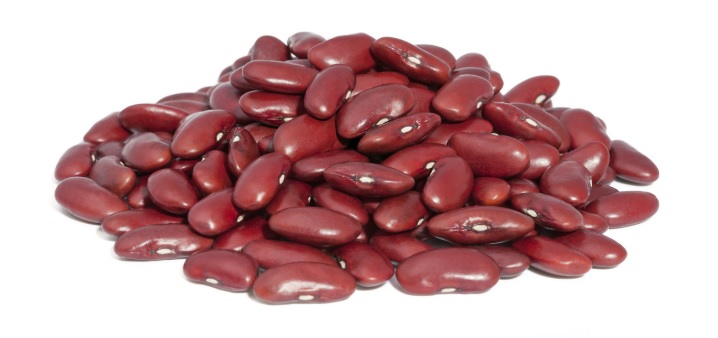
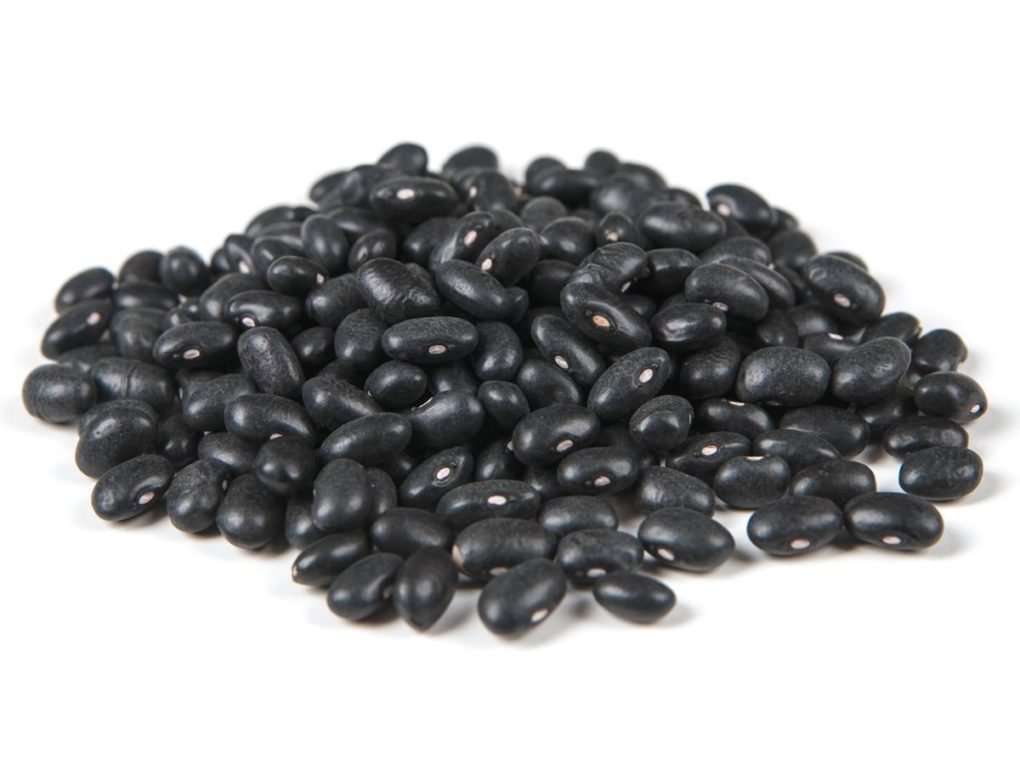
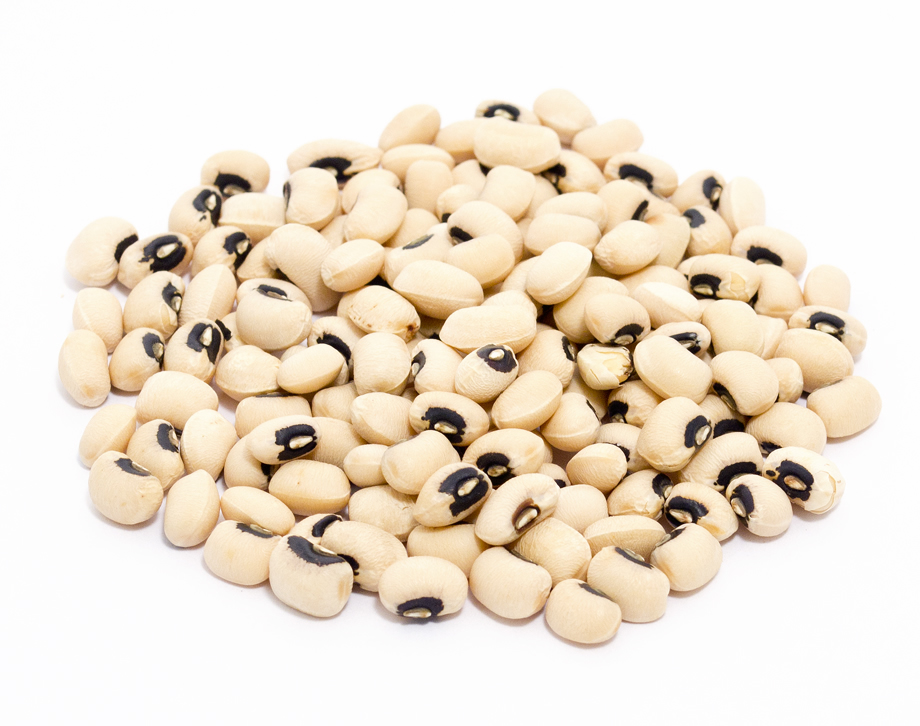
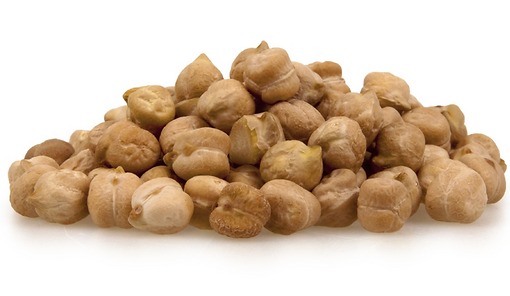
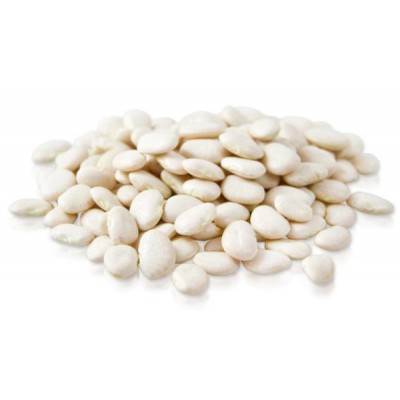

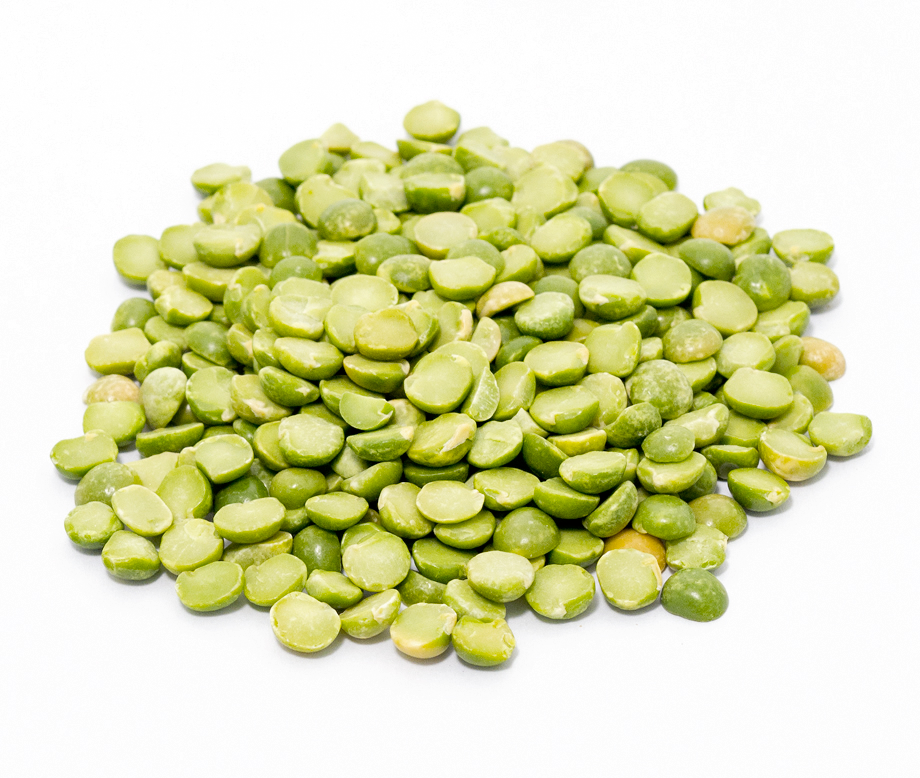


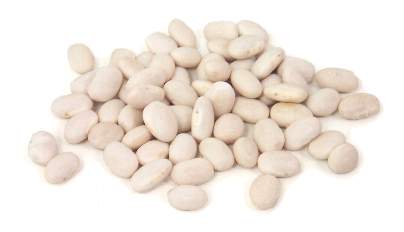
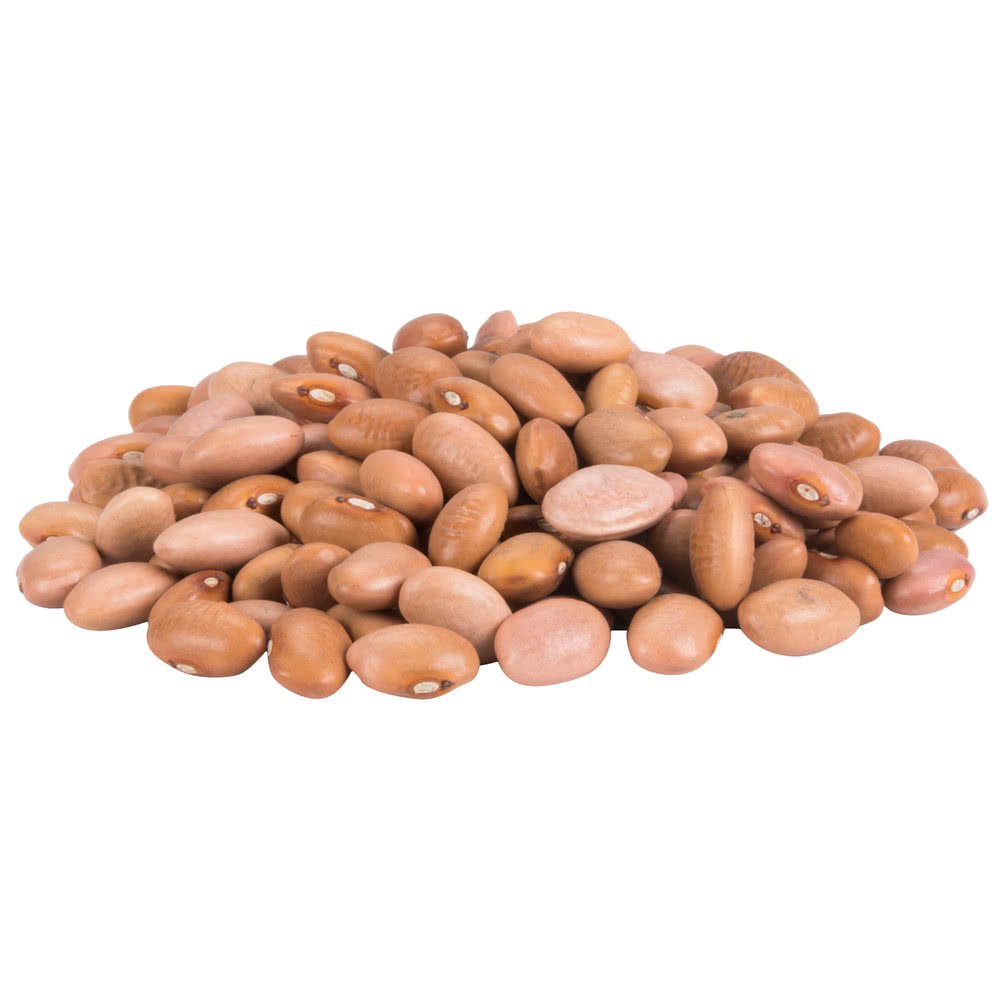
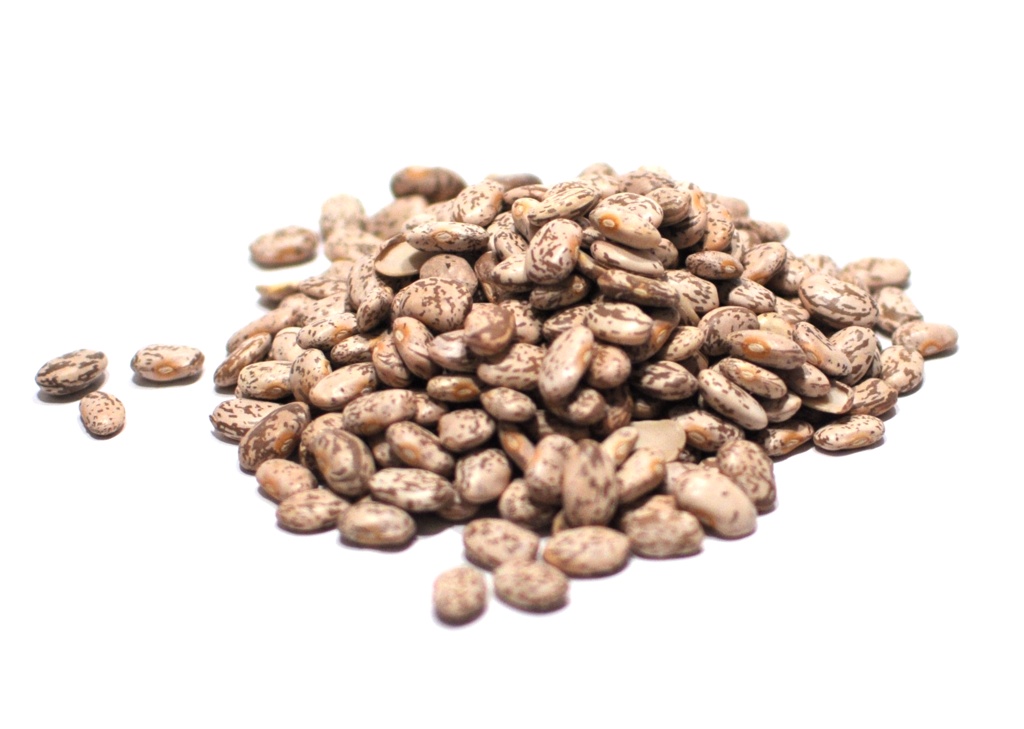
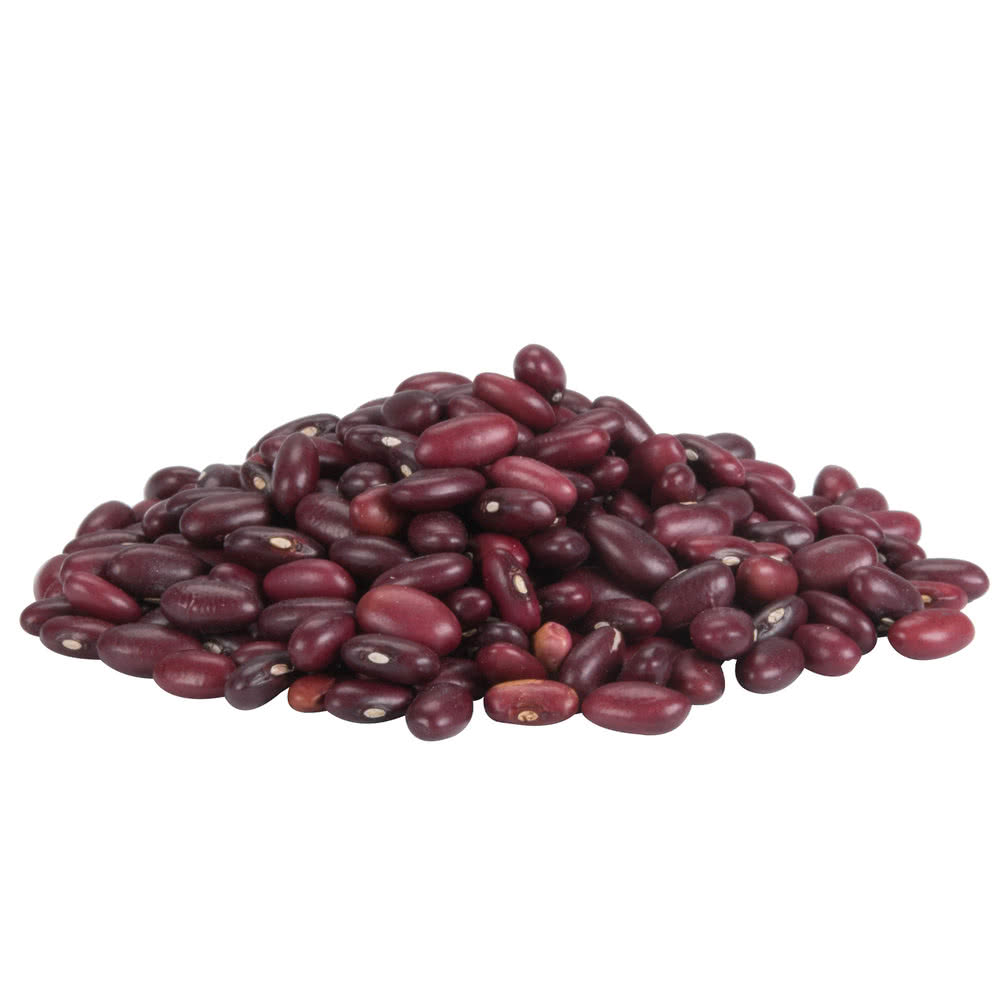 Small Red Beans
Small Red Beans Soy Beans
Soy Beans